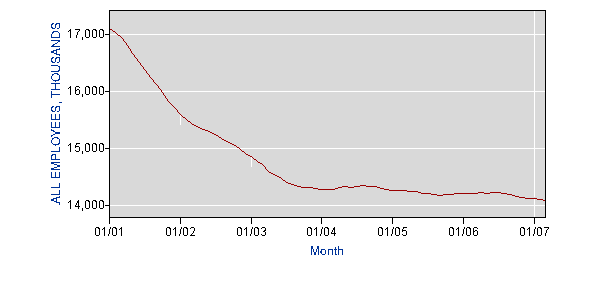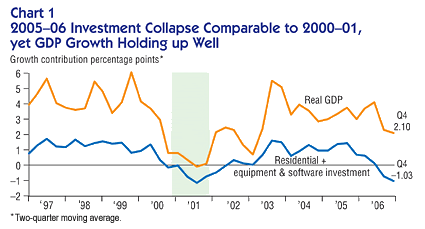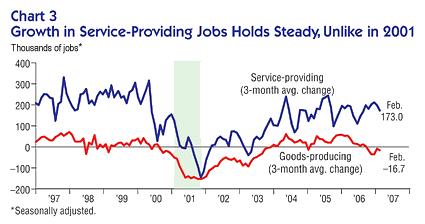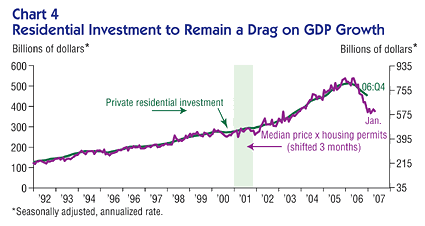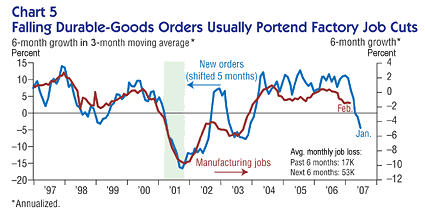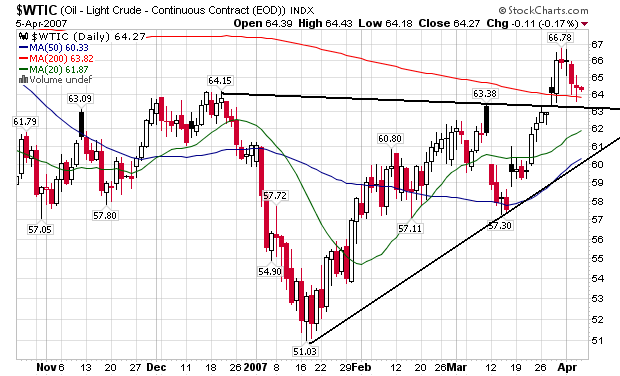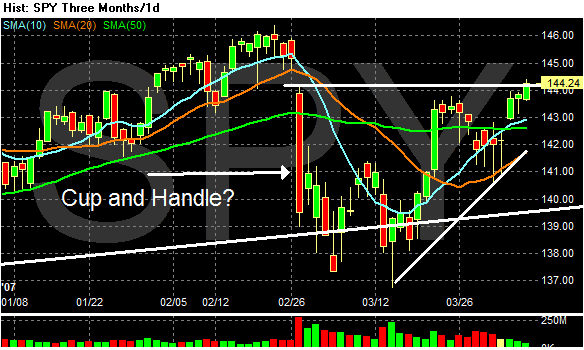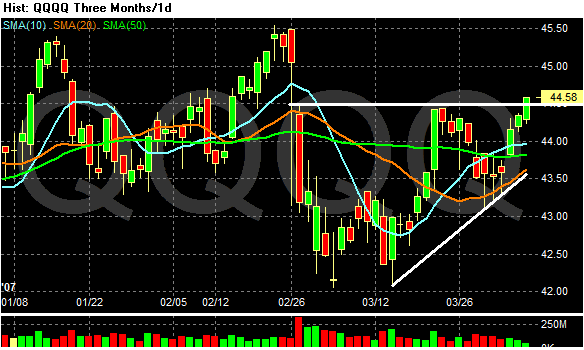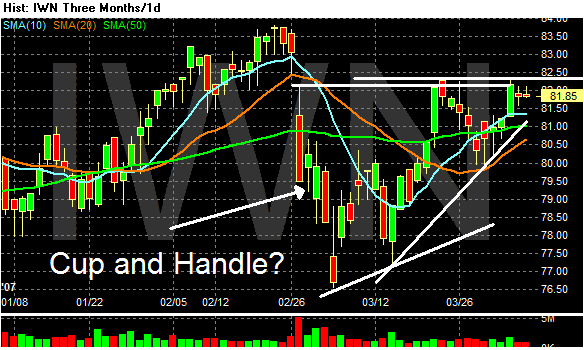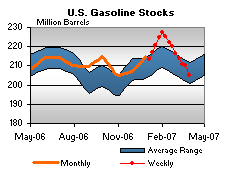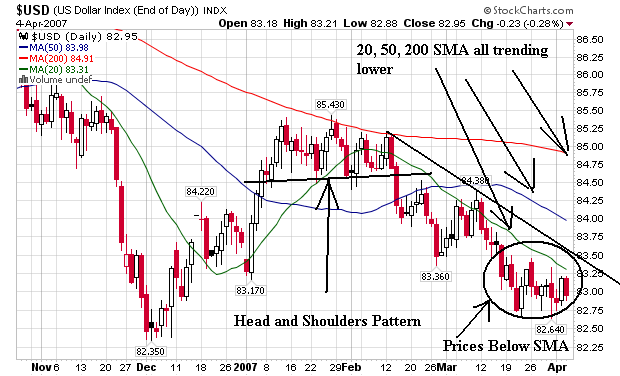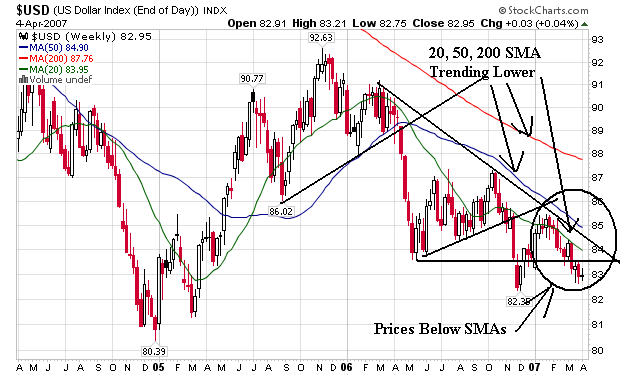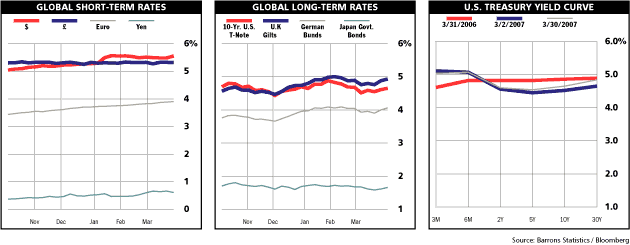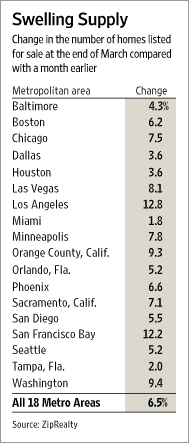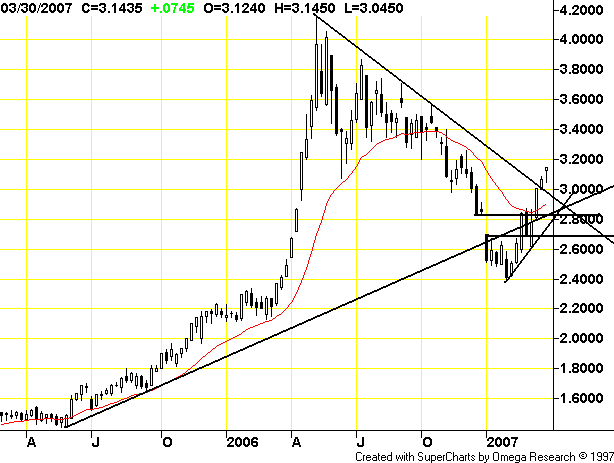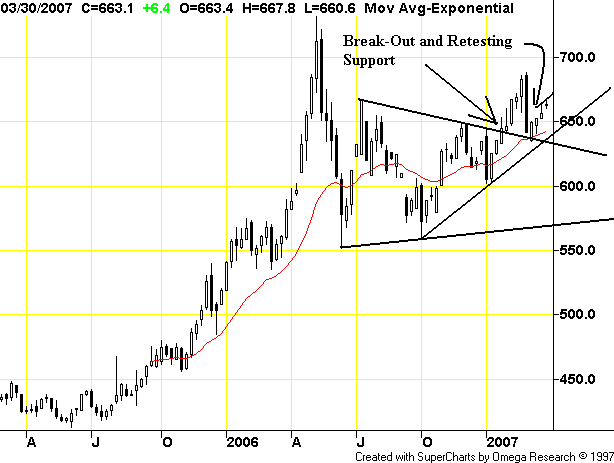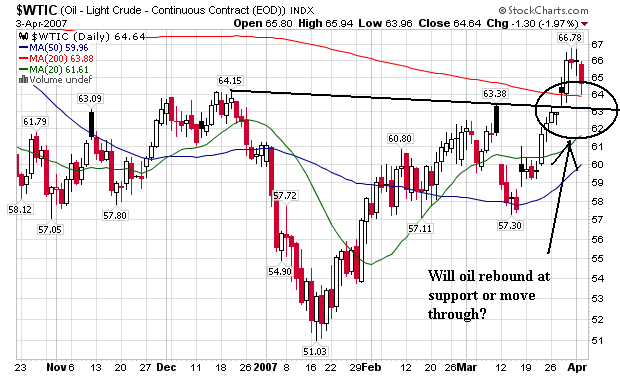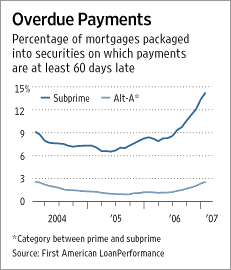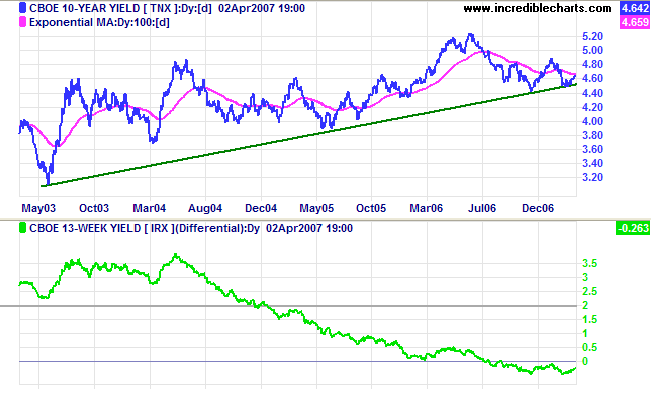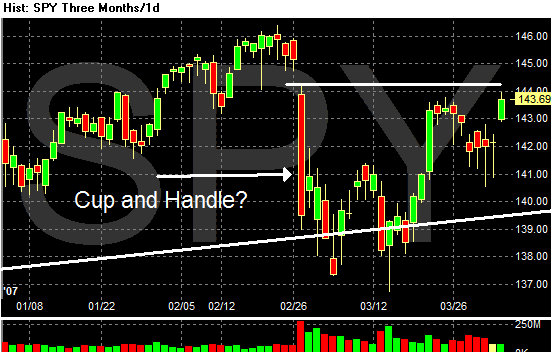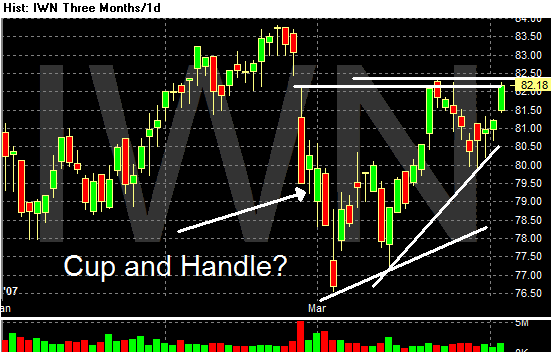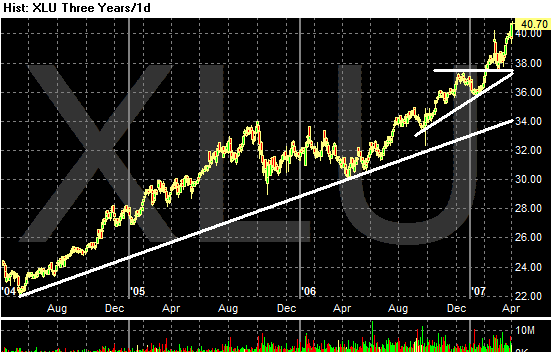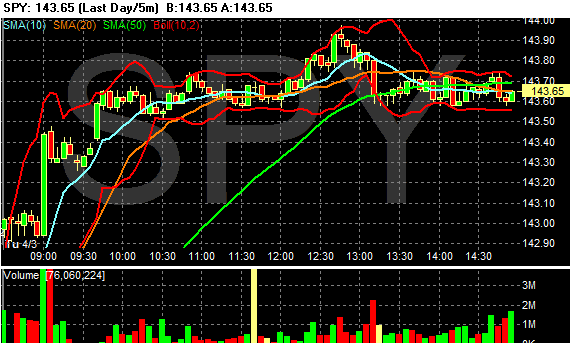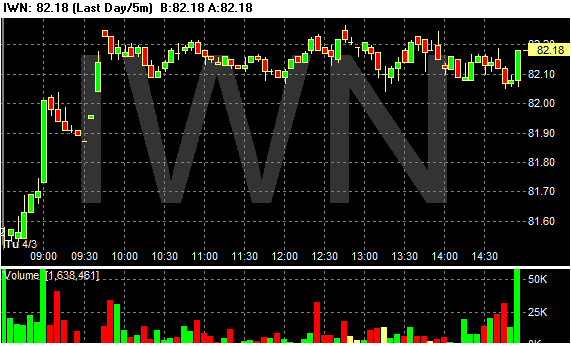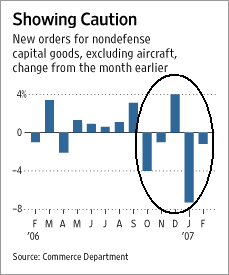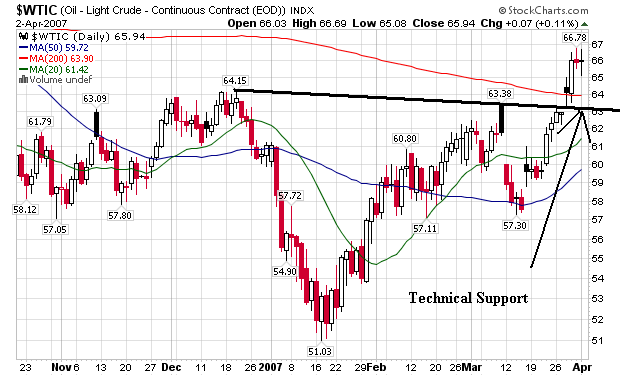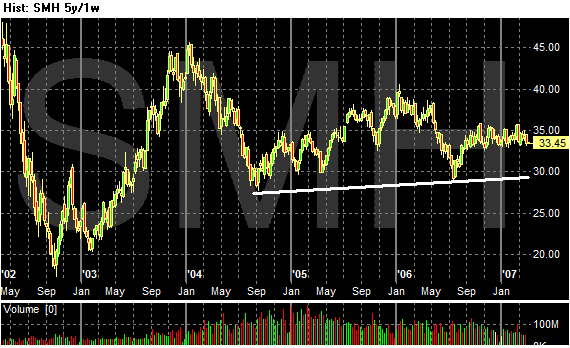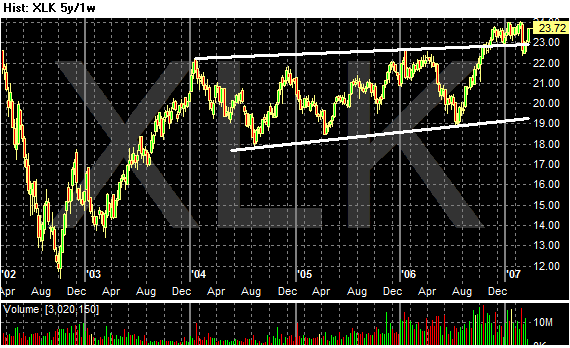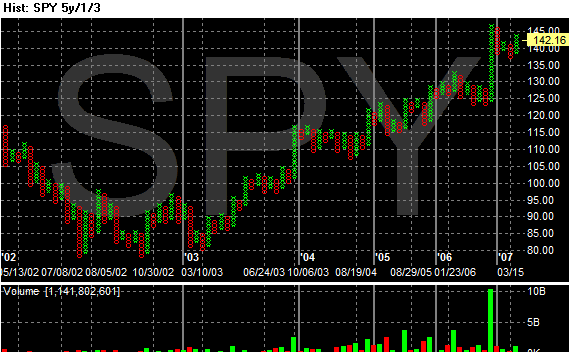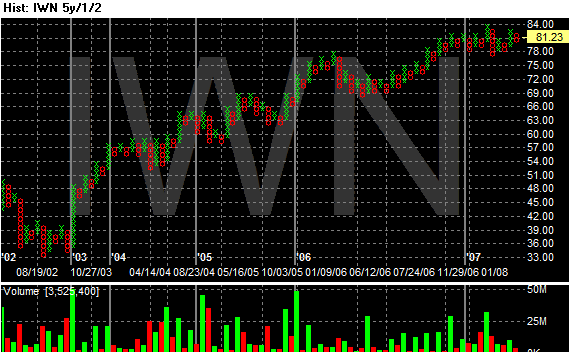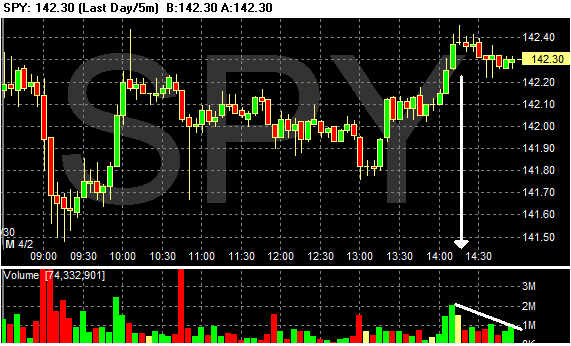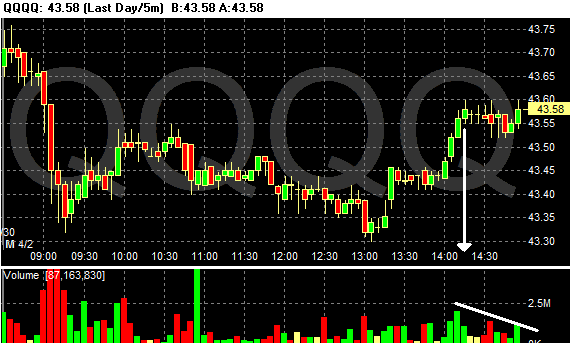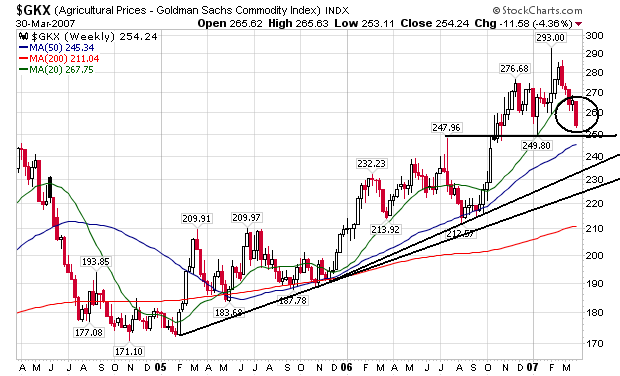From Yahoo Finance:The subprime mortgage implosion will take even more steam out of the already slowing real estate market this year and beyond, according to a new economic report.
More than two dozen subprime lenders have shut down in recent months and others are scrambling to stay in business as a spike in defaults caused by borrowers unable to make payments has rocked the mortgage industry.
Now, as lenders tighten credit standards, the housing market will likely see further declines in price and output, senior economist David Shulman wrote in the quarterly Anderson Report to be released Monday by the University of California, Los Angeles.
"We suspect the problem in the subprime area is just the tip of the iceberg for the mortgage market as a whole," Shulman wrote. "For all practical purposes, the subprime market is in the process of shutting down."
This ties in nicely with an article from CBS Marketwatch from last week:Trillions of dollars worth of adjustable-rate mortgages will reset in the next few years. That could dent consumer spending, but the wave of resets may end up being a ripple for the U.S. economy.
More than $2.28 trillion worth of ARMs were originated in 2004, 2005 and 2006, at the peak of the recent housing boom, according to a study released this week by a unit of real estate data company First American.
Some of these loans have already reset at higher interest rates, but a lot more have yet to reset.
This year, almost $370 billion worth of first ARMs are resetting. More than $250 billion worth will reset in 2008 and 2009 and another $700 billion will do so in 2010 and beyond, the First American study estimates.
Let's tie all of these strands of thought together.
Over the last 5 years, the subprime and Alt-A mortgage market have progressively increased in importance.

Let's assume that tightening credit standards disproportionately hit the subprime and Alt-A markets. Let's also assume that tightening standards effectively remove 30% of all subprime and Alt-A borrowers. That means a little more than 10% of all borrowers in last years mortgage market go away, at least for the time being.
This is at a time when new and existing home inventory are at incredibly high historical levels.
Decreased demand = lower prices.
Increased inventory = lower prices.
So far, consumer sales haven't taken a major hit from the subprime shake-out. But there are two important caveats to that statement.
1.) This just started. The subprime market has only started to fall apart over the last 4 months or so. It's going to be awhile for that to move it's way through the economy.
2.) Notice the number of mortgage resets that will occur over the next 3+ years. That's more resets than we are currently experiencing.
That means this problem of people having escalating house payments will be with us for longer than we would like.
